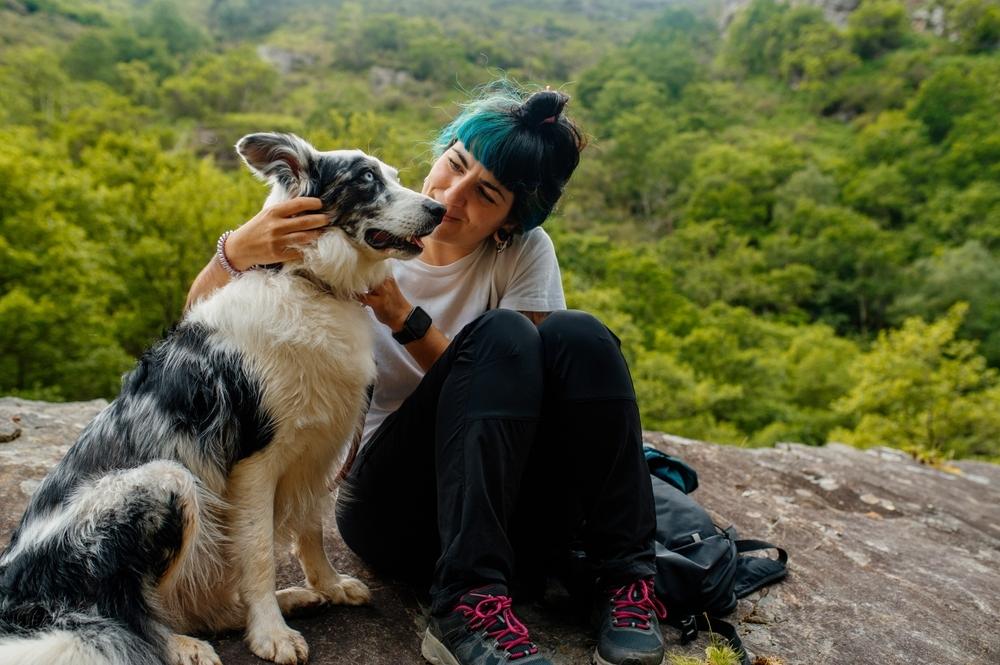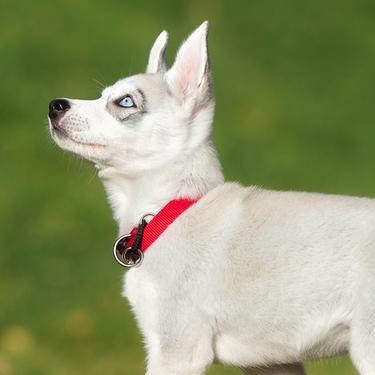

If your local temperatures are rising, you may wonder if a summer haircut for your dog or cat might help them stay cool and comfortable in the heat. While shaving dogs and cats is a well-intentioned thought, you might be surprised to learn their coat is actually quite helpful in the warmer months. Read on to learn why this is, when shaving your dog or cat may be useful and how to best keep pets cool during the summer.
Your furry friends have amazing built-in systems that help them maintain a healthy internal body temperature.

Shedding
Dogs' and cats' coats help them regulate their temperature, keeping them warm during the winter months and cool during the dog (and cat!) days of summer. Their hair or fur naturally grows and sheds as the seasons change. While the shift between seasonal coats is gradual, you'll likely notice increased shedding as temperatures climb, indicating their winter coat is on its way out.
Summer coats have shorter, thicker and fewer hairs, allowing air to flow more easily and keep your pet cool. On the other hand, winter coats have longer, finer hairs to conserve heat and help trap warm air in the layer next to their skin.
Panting
Famously associated with dogs, panting is a primary means for your canine companion to release excess heat. While cats may also pant in response to heat, it's less common and can be a sign of stress or overheating. A panting cat is likely already too hot, so bring them into an air-conditioned area and monitor them closely. If you notice any signs of heatstroke, like drooling, lethargy or restlessness, seek immediate veterinary care.
Sweating
Though they play a lesser role than shedding and panting, both dogs and cats have sweat glands in their paws to support temperature regulation. This is why you may notice sweaty paw pads — often observed by tell-tale paw prints — on hot days.
Grooming
Cats in particular will boost their personal grooming routine by increasingly licking their fur to help stay cool. Much like sweating in humans, damp fur helps create an evaporative cooling effect.
It may seem logical that shaving your pets' coats would help keep them cooler. But since their coats play a key role in regulating temperature, shaving dogs and cats actually robs them of this built-in system and places them at risk of heatstroke. Furthermore, dogs' and cats' coats help protect their skin from the sun's harmful ultraviolet (UV) rays. Removing this protective layer can set your pet up for a cat or dog sunburn.
Routine brushing can help support your pet's natural shedding process and allow them to reap their coats' sun-protective benefits.
Is Shaving Cats in Summer Ever Recommended? How About Dogs?
The next time you consider shaving dogs in summer or trimming your cat's fur to help keep them cool, think again. There are other, better ways to help your furry friend beat the heat (more on that later).
While it's unlikely your veterinarian will recommend shaving to keep your pet cool, they may recommend it in other circumstances. The most common reasons include matted fur or recurrent skin infections that require increased air circulation or easy cleaning access.
Leave It to the Groomer
In these cases, leave the shaving to a groomer or veterinary team — especially when medications or a concurrent skin issue, like a hot spot, is involved. At-home shaving attempts often result in accidental lacerations and burns, as clipper blades get hot quickly. Cutting your pet's hair too short can also put them at risk of sunburn, ingrown hairs and irritated skin.
Keeping your pets cool during the summer doesn't need to be a laborious chore or require extensive resources. Focus on these simple but key tips.

Limit Time Outside During Peak Heat
The sun's rays are strongest from 10 a.m. to 4 p.m., and the risk of your dog or cat getting a sunburn or overheating is highest within this window. Consider keeping your kitty (if you let them outside) or pup mostly inside during this time on hot summer days. You can still reap the benefits of exercise and outdoor activity by breaking playtime into multiple shorter sessions and reserving longer sessions for the early morning and evening.
Make Fresh, Cool Water Easily Accessible
Ensure your pet has easy access to cool water at all times. If you're heading outdoors with your pup, grab a portable collapsible bowl or doggy travel water bottle, which comes with an attachment that forms a makeshift water bowl.
Seek Shade
Before heading out with your pup on a warm summer day (or allowing your cat to lounge in their catio), make sure your destination has plenty of shady rest spots. If shade is scarce, bring an umbrella. Opt to leave your dog at home in an air-conditioned environment if you have any concerns about the temperature.
Brush Their Coat Regularly
Regular brushing allows your dog's or cat's coat to do its job more effectively. Well-brushed, mat-free coats allow for good air circulation and help keep your pet cool.
Shaving your dog or cat to help them beat the summer heat is typically discouraged since their coat helps prevent overheating, sunburn and other forms of skin damage or injury. Luckily, brushing your pet regularly will help their coat stay at peak performance all summer long.
Knowing the signs of heat exhaustion in cats and dogs and remembering to offer plenty of water and shade will help keep your pet safe in the warmer months and ensure you can enjoy your summer together.

















